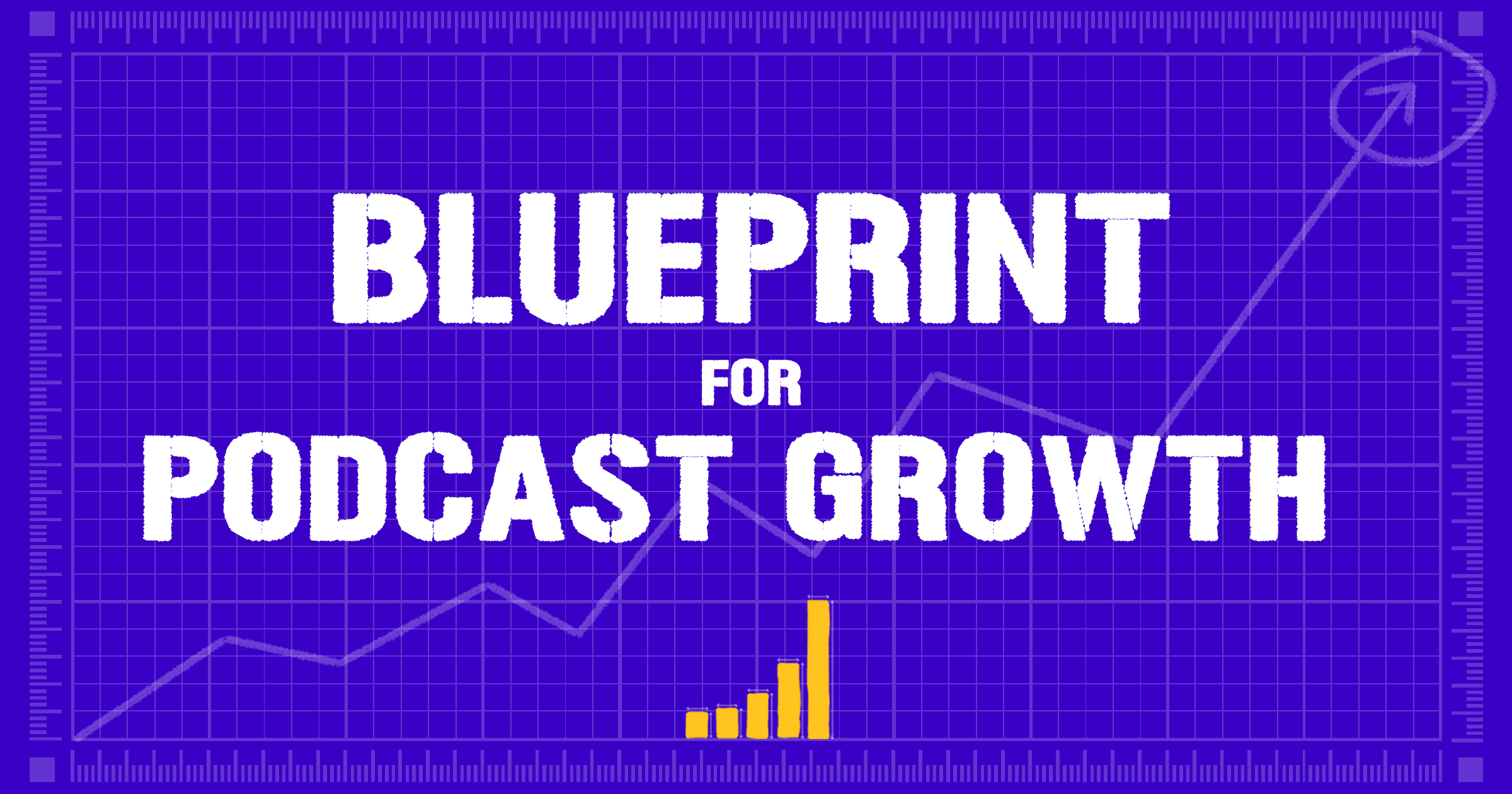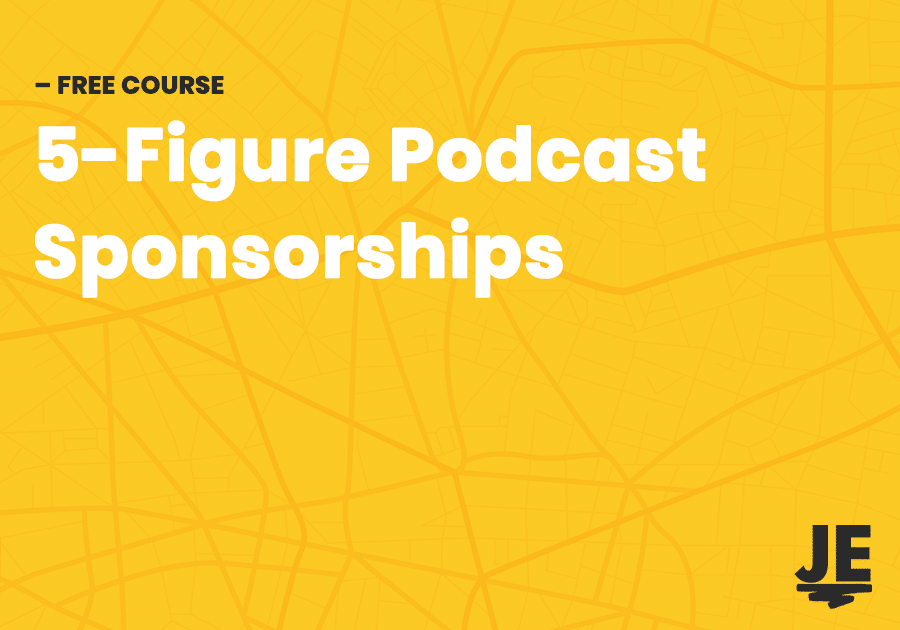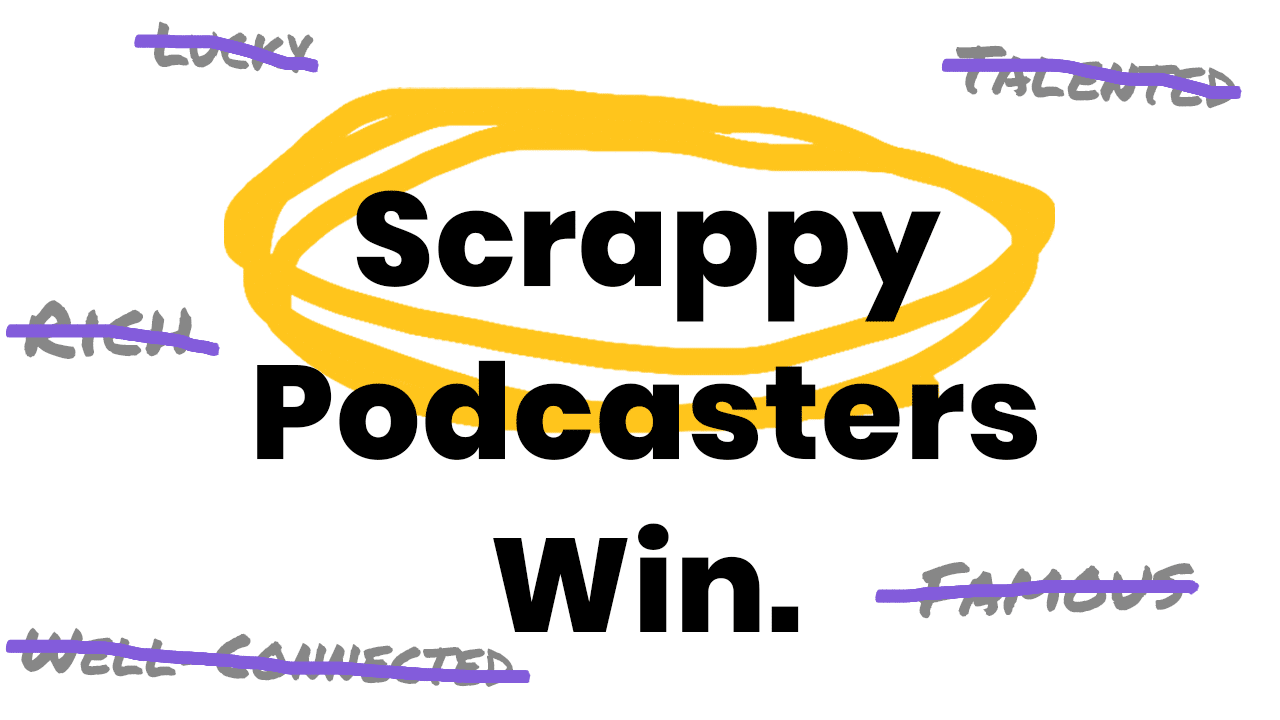If you’ve been on the fence about starting and growing a podcast over the past few years, you might feel like you’ve missed the boat already, and that podcasting has reached peak saturation.
Year after year, the hype around the medium continues to grow, bringing with it more listeners and sponsors, but also more competition, specifically in the form of big-budget networks and media companies.
This is enough to make many would-be podcasters and business owners second guess whether podcasting is actually worth their time and financial investment as they ask themselves, “Is it still possible to launch and grow a show that creates an impact and grows an audience?”
Is it too late to start podcasting?
The truth is that podcasting is still one of the least crowded content mediums. Compare the roughly 990,000 currently active podcasts (1.68 million total) with the 31 million YouTube channels and 600 million blogs.
New bloggers and YouTubers are still regularly finding ways to make their marks and grow audiences on those much more crowded, established content platforms. There’s no reason to think that there’s not just as much, if not more, room for new podcasts to gain traction.
There’s still plenty of space to start a new show and establish yourself as a podcaster in 2021, but the medium is no longer the wild west it was ten or five, or even three years ago.
While there was a time in which you could start a new show and, as long as your content and production quality were decent, organically build up a large audience within a year, things have changed.
In 2021, the bar for creating a show that has the potential to grow has been raised considerably.
In this article, we’re going to walk through exactly what you need to know to create and grow a podcast from the ground up in 2021.
Production Quality
Listen to a random selection of ten podcasts from 2015 and compare them to a similar selection today, and you’ll immediately notice that the average production quality has improved significantly.
Yes, many of the top shows have always had studio-level production quality, but in years past, many of the top shows, especially in smaller niches had production quality that was… questionable.
While there are certainly still popular shows that feature largely unedited audio recorded on cheap computer headsets with cheesy stock music intros and outros, the numbers are dwindling fast.
The “content is king” argument may have worked in years past, but today, your production quality is an essential component of your podcast’s packaging that you should ignore at your own peril.
The rise of large podcast networks and legacy media companies in the podcast space, both with massive production budgets and extensive knowledge when it comes to producing compelling media, means that the rest of us are now measured against the bar they set.
Competing with the Wonderies, Gimlets, Disneys, and New York Times of the world might seem like a daunting proposition at first. And if you choose to compete directly with them, it is.
But as we’ll cover later in this article, we as indie podcasters don’t need to compete directly with them when it comes to our content, and there are actually some distinct advantages that our small size gives us.
And on the production quality side?
Recording Gear
While the bar is certainly higher than it was in years past, achieving near-professional sounding audio recordings was never that difficult or expensive.
You can get a decent-sounding mic for less than $100 (or a more than decent or pro-quality for $250 and $400 respectively) and a rock-solid audio interface for right around $150.
Depending on your needs, you can easily assemble a pro-quality recording setup for less than $500.
Even with solid gear, however, one of the biggest challenges to capturing high-quality recordings has always and will always be your recording environment itself. Luckily, even as a budget DIYer, there are plenty of ways to modify your existing environment to meet your podcast recording needs.
Recording Environment
If there’s one thing the pandemic year of 2020 taught us, it’s that you don’t need a professional studio to record great-sounding audio at home.
Indeed, hosts of many of the biggest shows who previously recorded in-studio were forced to get creative with their home recording setups. In many cases, the difference was negligible, most likely unnoticed by the casual listener.
With a solid blanket fort recording booth, any of the equipment mentioned above, and an understanding of how to use it, there’s no reason you can’t achieve the level of recording quality required to sound like a legit show in 2021.
But while sound quality is more important for podcasting success than ever before, doesn’t mean it’s enough to grow a show on its own.
Content Quality & Differentiation
Much like with production quality, the minimum expectations for content quality have been raised significantly over the past few years.
When I first started listening to podcasts in 2015, there were many niches in which there were only three or four active shows speaking on that topic. Compare that to today where almost every topic imaginable has dozens of active shows and it’s clear that just showing up with a great-sounding podcast is no longer enough to build an audience.
This means that in 2021, it’s absolutely essential to be absolutely clear on your show’s differentiator, and build your podcast’s brand around it.
Aim For The Niches of Niches
While almost everyone starts off wanting to build a large following, they often undermine their effort by aiming too broad in their initial audience targeting.
You may have been able to grow a show in 2015 by creating a general online business-themed podcast, but today, that’s way too broad to gain any traction.
Instead, one of the fastest ways to stand out and gain some initial traction is by narrowing the scope of who your show is for.
How narrow?
A good rule of thumb is to keep narrowing down your target audience until you could conceivably create the single best show in the world for those people.
Then, create that show for them.
Most podcasters fail to understand that the primary driver of growth for any podcast is word of mouth. In other words, the people who listen need to care enough to tell their friends and colleagues.
In order for people to care enough to tell others about it, however, your show needs to mean something to them. It needs to provide something they can’t get anywhere else.
As we’ll discuss shortly, there are other ways of providing that one-of-a-kind experience for your listeners, but one way is to speak more intimately and personally to a thin slice of people than any other podcast has done yet.
Find Your Minimum Viable Audience
When it comes to aiming narrow, it’s worth mentioning that there’s a balance to be found between aiming narrow enough to resonate deeply with a (relatively) small group of people, and there being enough people to support you and your show, what Seth Godin refers to as the “minimum viable audience”.
While there are plenty of micro-niches that are still ripe to be tapped into and nurtured, you might not have a personal connection with any of them. Or, you may find that you simply can’t compete on quality with an established incumbent.
Aiming narrower is great because it allows you to repurpose similar content from broader shows on the same topic and distill and translate it into content that is specifically applicable to your micro-tribe.
This can be an incredibly valuable service to your audience, but if that’s all your show offers, there’s very little tying them back to you and your show. You’re still playing a commodity game based on ubiquitous information that is easily available elsewhere.
For many, the specificity of your otherwise commoditized content may not be enough to get them talking about the show, especially if there are less-specific but objectively better sources of information elsewhere, which there almost certainly are.
For this reason, while aiming niche is essential, podcasters who want to stand out and grow in 2021 need to go further still in differentiating their shows.
One of the best ways of doing that is opting out of the commodity market of information distribution and creating a different kind of show.
In 2021, Perspective & Personality > Information
We’re in the midst of a massive (and still growing) content bubble.
At our fingertips, each of us has access to more easily-available information than we know what to do with. Literally.
With so much information so easily Google-able, the challenge for any of us is no longer access to information, but making sense of it. This is precisely where podcasters have an incredible opportunity to stand out.
While Google is a great tool for finding answers, it’s not all that great at finding perspective. Podcasting, on the other hand, is the perfect medium for taking the time to sift and sort through the various ideas that are relevant to your audience, and help make sense of them.
More valuable to your listeners than another listicle or how-to is a trusted source willing to take the time and break down why any of the information they’ve already seen elsewhere matters to them.
Instead of creating a 40-minute episode covering the same information they could get from reading a 3-minute blog post, lean into the strengths of podcasting.
People might initially discover your show because they’re interested in your topic, but they’ll stick around because of your personality and perspective. Doubling down on these traits is the fastest way to differentiate your show create a community of superfans who will evangelize your show and do your marketing for you.
Get to know your quirks and idiosyncrasies and let them show through. Share your opinions, analysis, and wisdom instead of deferring to others. Talk about your personal experience, tossing out as many potential threads for connection on a personal level as possible.
Information is abundant. Connection is scarce. Which is exactly why it’s valuable.
But while personality, perspective, and the personal connection that ensues will certainly play a big role in keeping listeners around, they first need to discover your show.
Your Show Needs A Compelling Concept
We’ve already established that word of mouth is the primary means of growth for any podcast. This doesn’t mean that you can simply sit back and wait for your audience to spread the word for you, however.
As discussed previously, a show needs to mean something to a listener before they’re likely to share it. But they also need to know how to talk about it.
You might be able to create a show that matters deeply to your listeners, but if they can’t communicate clearly and succinctly to others what the show is actually about, it’s unlikely many of those others are going to make their way back to the show.
In order to win new listeners, every podcast needs a compelling concept, a central statement that differentiates and summarizes the content and format of the show in a way that causes your ideal listener’s ears to perk up when they hear it.
Take the concept of my first podcast, Rain City Scoop: An explicit-rated tour of Vancouver’s craft ice cream scene, where each week, we record on location at a different ice cream shop and debate its merits.
I’m not going to say that’s the best concept statement in history, but it clearly differentiates the show from anything else you’ve likely listened to, and if you’re interested in ice cream, or the local Vancouver food scene, you might just be intrigued enough to listen.
While coming up with a concise and compelling concept statement is important, your show has to live up to and embody the statement fully.
More than a pithy tagline for your marketing, defining a concept that is compelling is about creating a show that is unlike anything else currently in existence. Your goal with any podcast isn’t to create the same show your listeners can get from a dozen different hosts elsewhere, but to create the one and only, the show that only you can create.
When you have a show concept that is compelling, and an accompanying summary that’s easy for your listeners to share with consistent messaging, it’s only a matter of time before your show begins to grow.
That said, especially at the start, it’s often necessary to do the legwork yourself to get your show into the ears of your ideal listeners, planting the seeds for your future audience.
Said differently, you need a marketing plan.
Create Your Marketing Strategy
Most podcasters I talk to have no marketing strategy.
At best they have a weekly routine of posting graphics, audiograms, and maaaaaaybe a video clip or two from the show on social media, but are often frustrated that they aren’t seeing any measurable results for their efforts.
In these cases, there are two problems at play. The first is a misguided understanding of how to use social media effectively and the role it plays in growing a podcast. The second, and more important, is a misunderstanding of what “marketing” even means.
Marketing is not about getting eyeballs on your podcast (or the promotional material leading back to your show).
Marketing is about authentically connecting with people.
Thus, a marketing strategy is a reliable method of connecting with your ideal listeners before they’ve heard of you, and then deepening that connection once they’re in your orbit.
With this as your goal, it becomes absolutely essential to know who that ideal audience member is.
When you have that knowledge, you know exactly how to find them, catch their attention, and connect with them in a meaningful way. When you don’t, you end up shooting in the dark and marketing becomes a confusing, frustrating, ineffective process.
There’s too much noise out there today to be able to safely rely on your audience finding their way back to you. If you’re serious about growing your show, you need to take an active approach to audience growth.
This means having a solid marketing strategy in place.

Patience, practice, and experimentation
Even with everything that we’ve discussed in place for your show, you need to build a habit around continual practice experimentation, not to mention a heaping dose of patience.
It’s impossible to know exactly what you can create that will resonate most deeply with your audience until you actually create and ship it.
This approach of patience and experimentation applies to your show itself, including your content and production, but also your marketing, which I like say follows the scientific method.
Listen to the first episode (or first of almost any podcast that later became huge and while the seed of the idea might have been there, the show has likely undergone significant transformation in order to find its groove. Listen back to the first 50 episodes of This American Life if you want a great example of this.
The truth is that building anything great takes time. No one gets it right the first time and neither will you.
In your first year or two, what’s more important than getting it right is continuing to learn, experiment, try new things, make mistakes, and slowly but surely strip away all the fluff until you get to the essence of what you and your show have to offer.
Yes, it’s going to take some time. But podcasting is built on compounding returns, and while you might spend the first stretch feeling like you’re not making any progress, give it enough time, and podcasting can and will change your life.
It’s true, it might have been faster and easier had you started your show in 2014, but it’s not too late.
There’s always room for unique ideas, insights and perspectives. You have those. You have the ability to create someone’s favourite show.
But in 2021, you need to be smart, prepared and persistent.
You’ve got this.
I’d love to hear your experience of starting a new show, especially if you’ve launched it in the past year or two. Hit me up on Twitter @iamjeremyenns and let me know what has (or hasn’t) worked for you.
And if you’d like to go deep on building your podcast’s marketing foundation from the ground up, consider signing up for an upcoming cohort of Podcast Marketing Academy.
- Why Wouldn’t They Just Google It? - March 14, 2021
- Before You Can Market Your Podcast, You Need To Create A Marketable Podcast - March 11, 2021
- Podcast Promotion & Marketing Are Different (Here’s How to Use Each Effectively) - March 10, 2021




